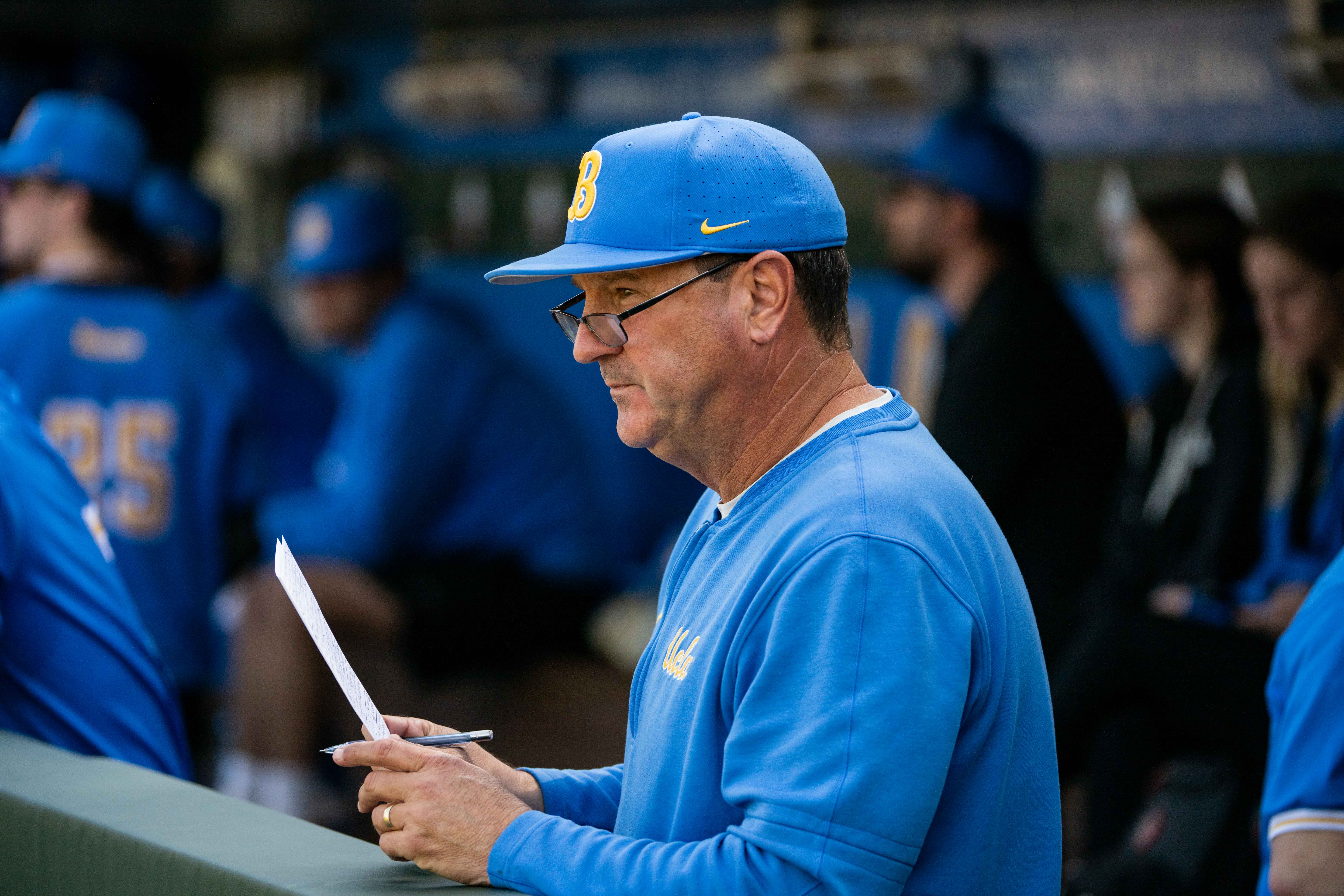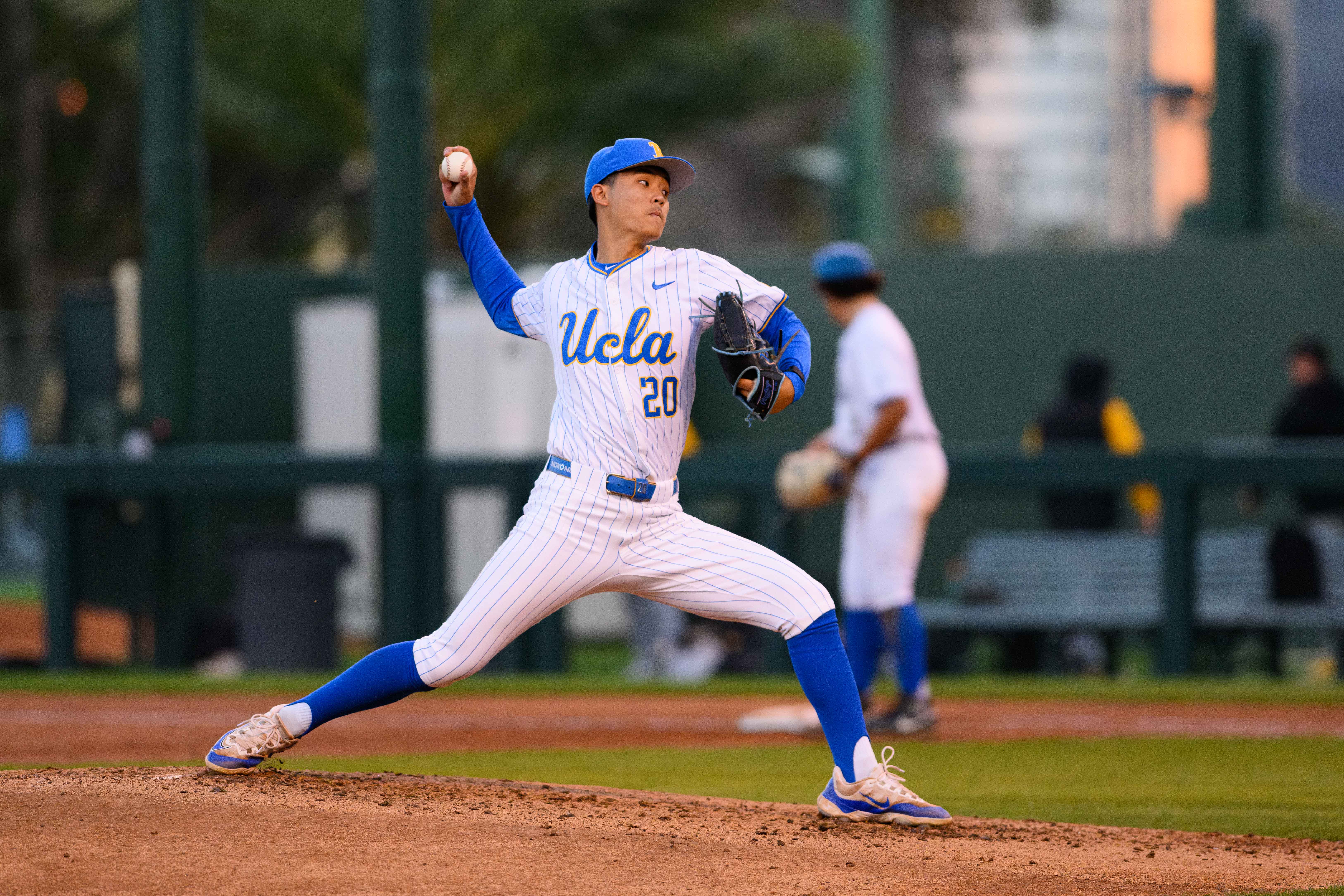Five Things: UCLA baseball pre-Big Ten play
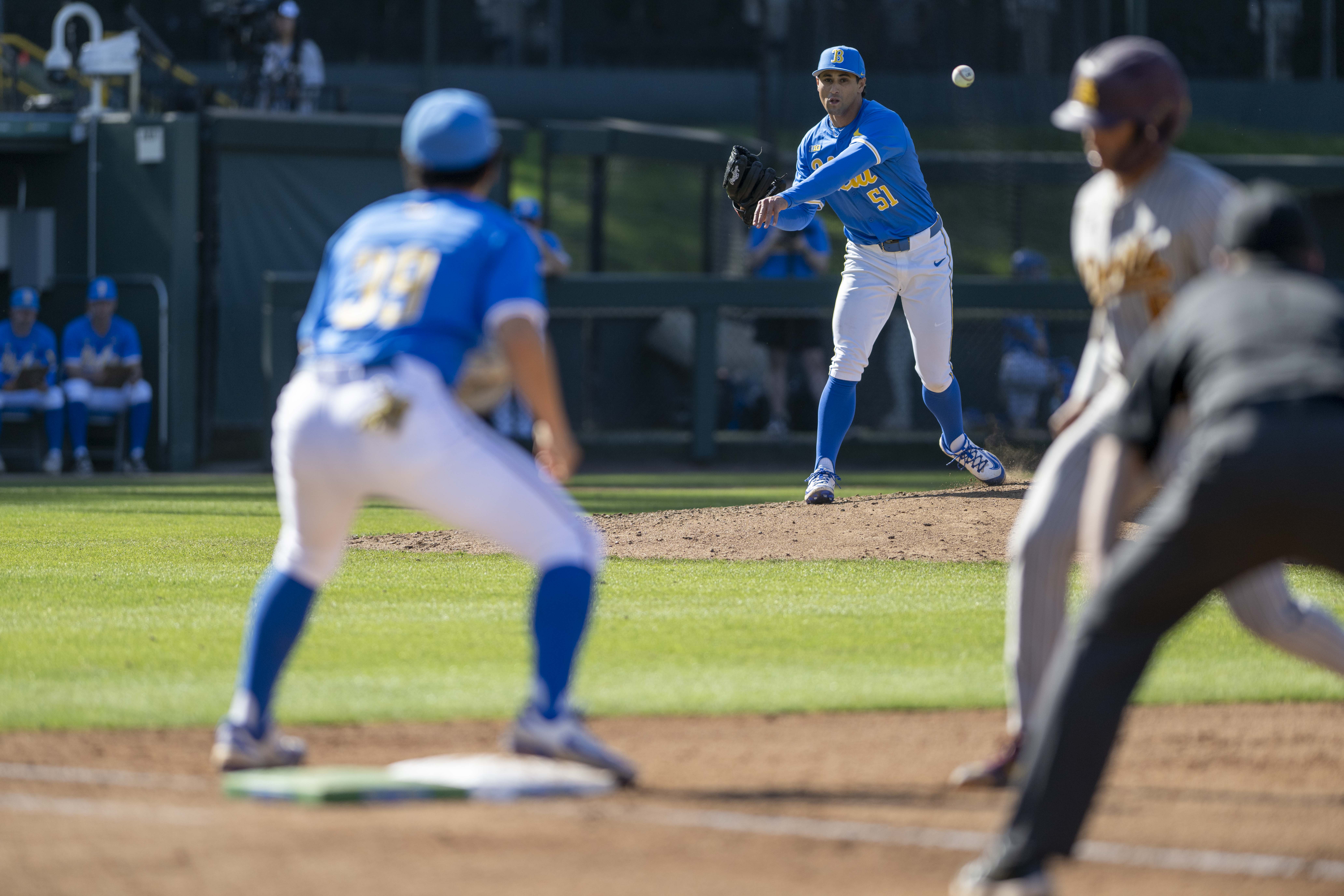
Ryan Rissas attempts a pickoff of first. The graduate student left-hander has appeared five times for UCLA baseball this season after spending four years with UC San Diego. (Brianna Carlson/Daily Bruin staff)
By Kai Dizon
March 6, 2025 7:18 p.m.
This post was updated March 7 at 2:22 a.m.
UCLA baseball (10-3) heads to the East Coast to face Maryland (7-5) for its conference opener – a three-game weekend series beginning Friday. Assistant Sports editor Kai Dizon shares five thoughts ahead of the Bruins’ Big Ten debut in College Park, Maryland.
The horse’s name was Friday
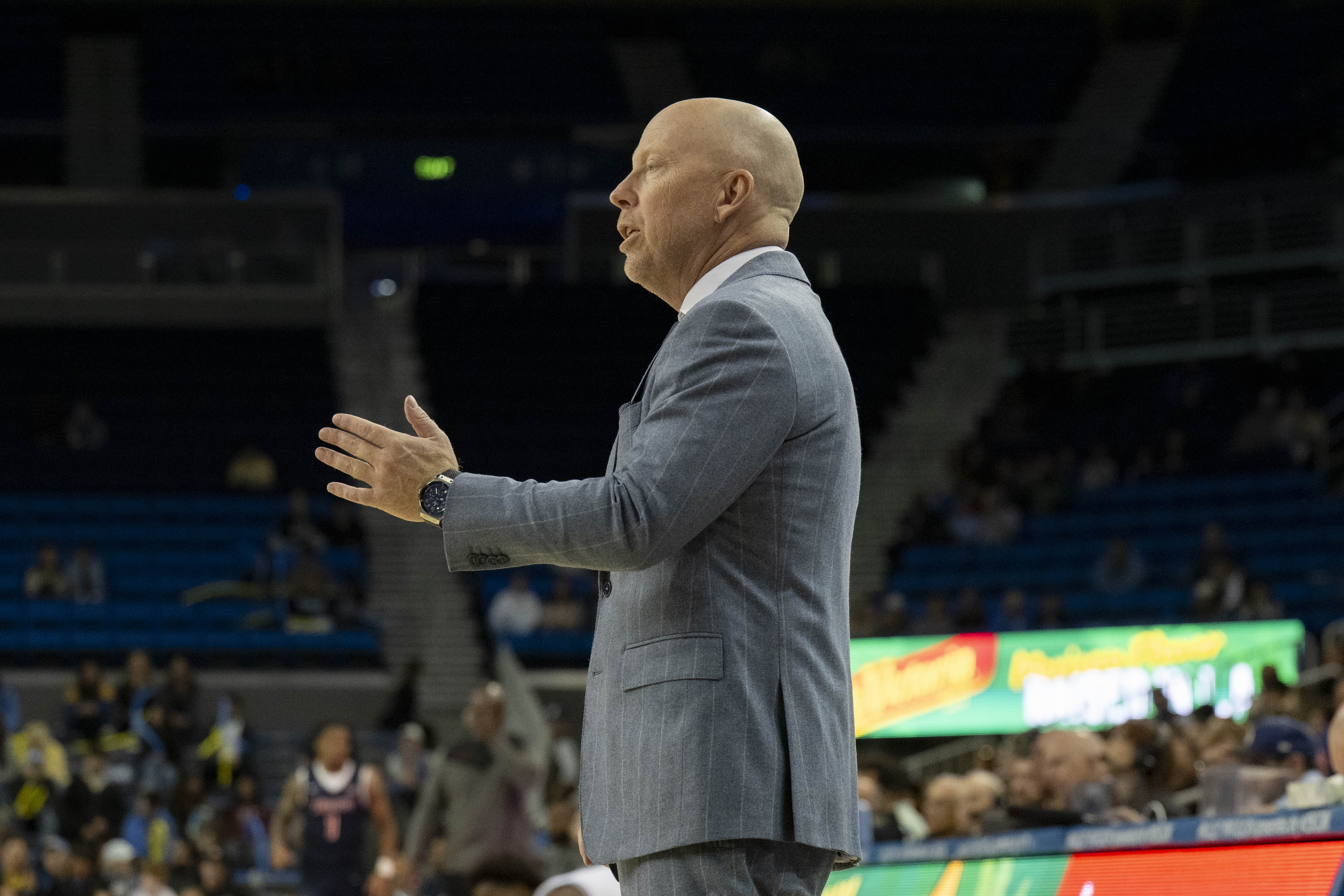
Throughout this season, UCLA men’s basketball coach Mick Cronin has said his team’s 5-5 record on the road is a product of a series of things: poor coaching, a lack of mental toughness and a rigorous travel schedule created by the Bruins’ move to the Big Ten.
Coach John Savage said UCLA’s trip to College Park, Maryland, is the furthest the team has ever traveled for a conference game. And along with this trip, the Bruins will have to venture to the Midwest twice this season.
But unlike men’s basketball, baseball’s schedule remains largely untouched in structure. While the men’s basketball team has played a game on every day of the week this season – and often has a varied schedule week to week – the baseball team’s schedule follows the same structure it held in the Pac-12.
Weekend series begin Friday and end Sunday – barring UCLA’s regular-season finale against Northwestern that goes Thursday through Saturday. And midweek games are played on Tuesdays in Southern California.
Sure, some flights will be longer, and the team will have to adjust to cities and towns it’s never been to, but baseball won’t have to deal with a seemingly ever-changing schedule the way many other UCLA athletics programs have.
Baseball players, pitchers especially, are often said to be creatures of habit – and habits they’ll be able to keep, even in the Big Ten. Weekend starters will still typically pitch just once a week and position players four times a week – at least during the regular season.
UCLA’s football and basketball players have often compared their Big Ten schedules to the grind of an NFL or NBA season, but the same can’t be said for UCLA baseball’s schedule and an MLB season. While certainly grueling in its own right, the Bruins’ 54-game slate is nothing next to a 162-game schedule with typically just one off day a week. It’s very much still college baseball.
Bundle up
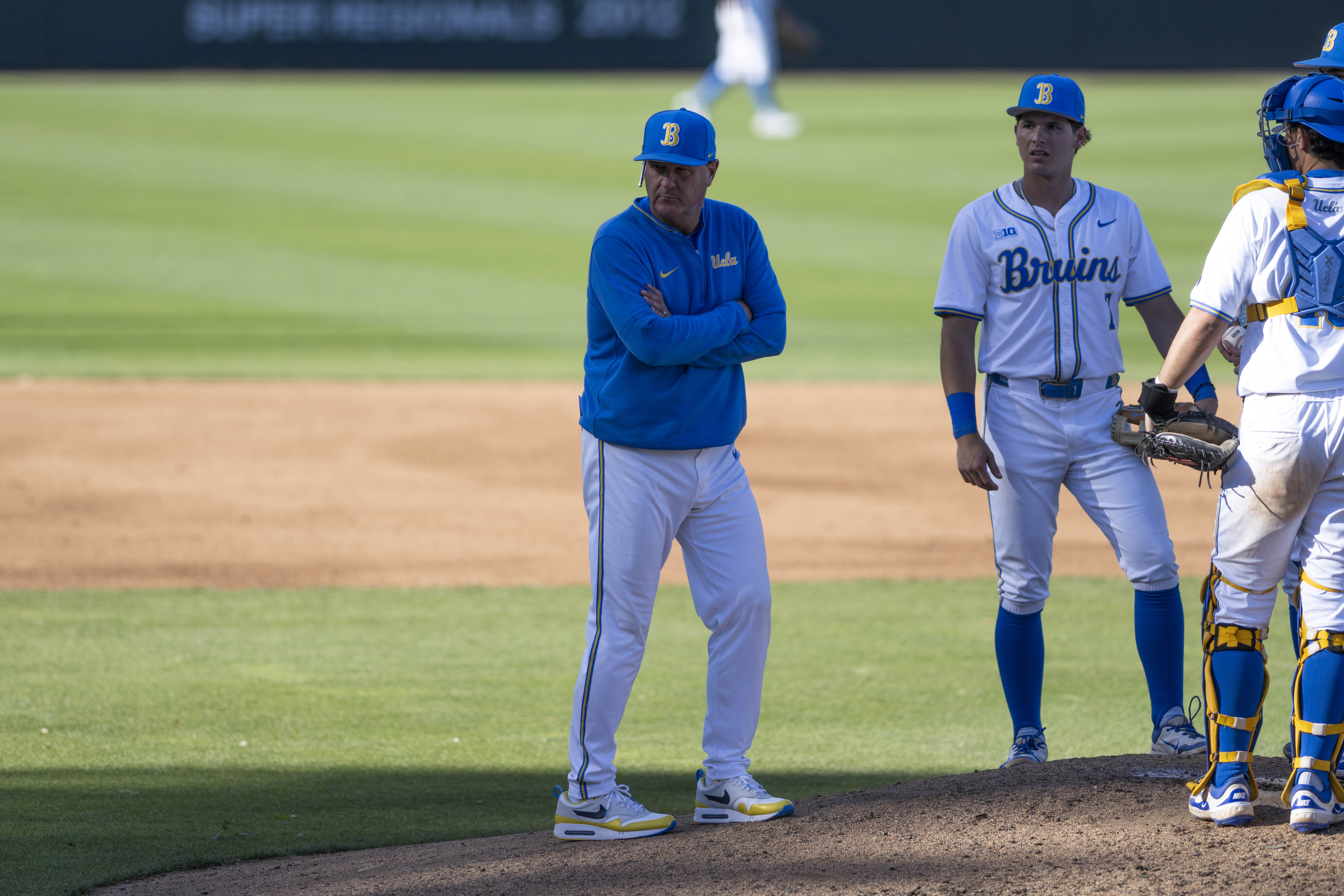
In UCLA’s three games at the Kleberg Bank Classic in Corpus Christi, Texas, from Feb. 21 to Feb. 23, it allowed six unearned runs on five errors.
However, Savage said his team’s defensive performance wasn’t a concern.
“We have a good defense,” Savage said. “It was freezing in Texas. It was hard to do anything in Texas.”
So yes, Big Ten baseball games will still fall on Friday, Saturday and Sunday. But unlike Big Ten basketball games, Big Ten baseball games are played outdoors.
The Bruins’ games in Corpus Christi had gametime temperatures of 44, 43 and 48 degrees Fahrenheit. College Park, Maryland, is forecasted to be 50 degrees Friday, 48 on Saturday and 47 on Sunday. Maybe not quite as cold as Texas, but certainly not the Southern California climate the Bruins are used to, where temperatures at first pitch have typically been in the 60s or 70s this year.
If Savage and company haven’t devised a strategy to deal with the problems colder weather poses, the Bruins may end up a fish out of water.
Because he gets on base
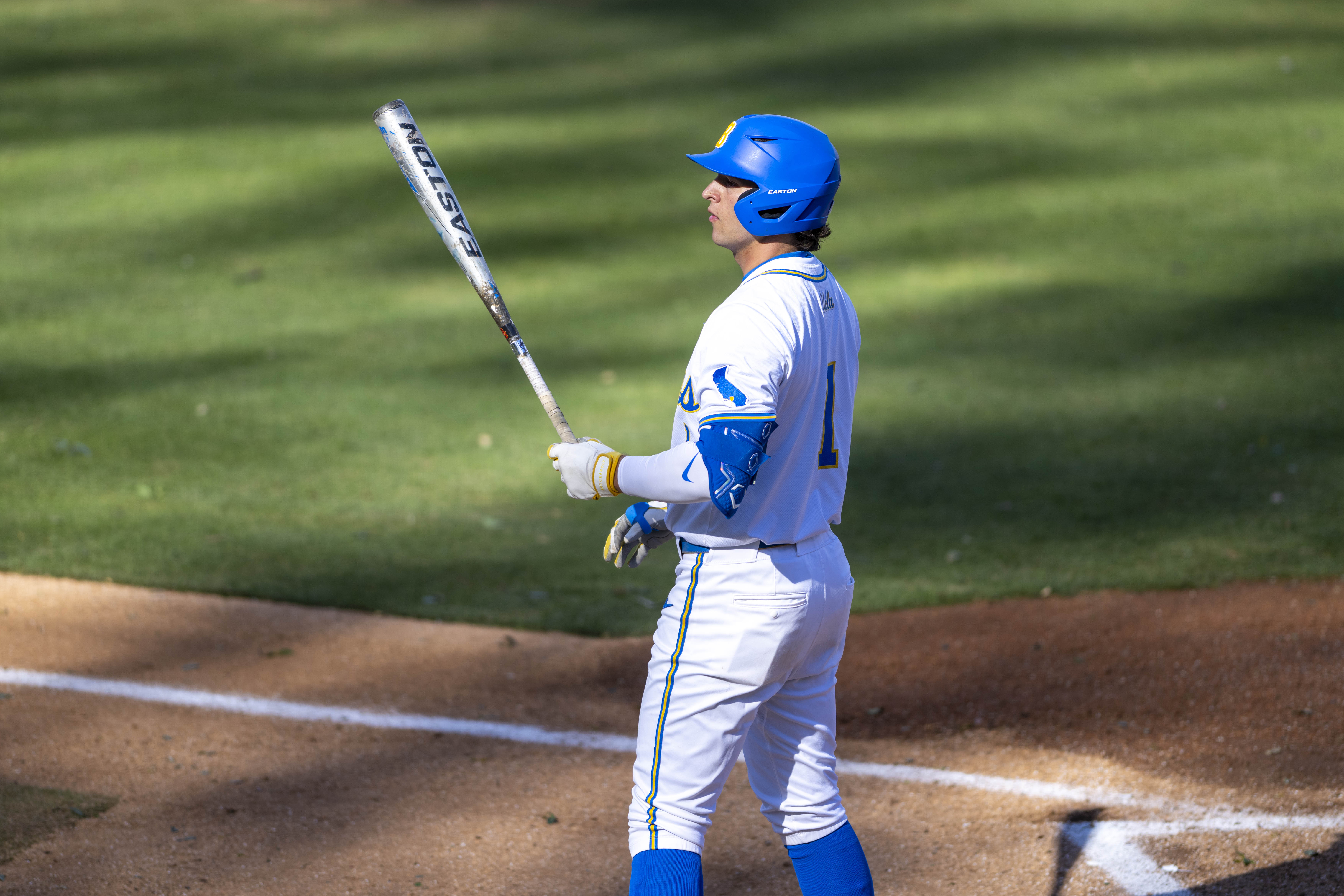
Through 13 games, UCLA has scored double-digit runs five times – including a 22-run showing against Michigan on Tuesday. They did so in 2024 just eight times in 52 games.
Last season, UCLA hitters slashed .264/.366/.393. This year, they’re slashing .276/.420/.443 through 543 plate appearances – numbers are up across the board, and the biggest spike has come in on-base percentage, up 54 points.
Nobody has been more instrumental in the Bruins’ offense than Roch Cholowsky. The sophomore shortstop leads the team, reaching base in half of his plate appearances this season. Over his last 29 games played, dating back to last season, Cholowsky is slashing .364/.482/.718 for a 1.200 OPS over 137 plate appearances.
The sophomore is walking 21% – over double his freshman mark of 10.2% – his ISO is up .199 compared to last season and his wRC+ is 159 in 2025 compared to 115 in 2024.
Despite consistently hitting as the No. 2 hitter in the lineup, Cholowsky has managed five more RBIs on the season than any other Bruin. And if the best ability is availability, Cholowsky has started every game since arriving in Westwood.
The sophomore was the No. 17 player in his high school class, per Perfect Game, and was projected to be picked in the first round of the 2023 MLB Draft prior to his commitment to UCLA. Instead, the shortstop earned Second-Team Freshman All-American honors and doesn’t look to be slowing down anytime soon.
Weekend woe-tation
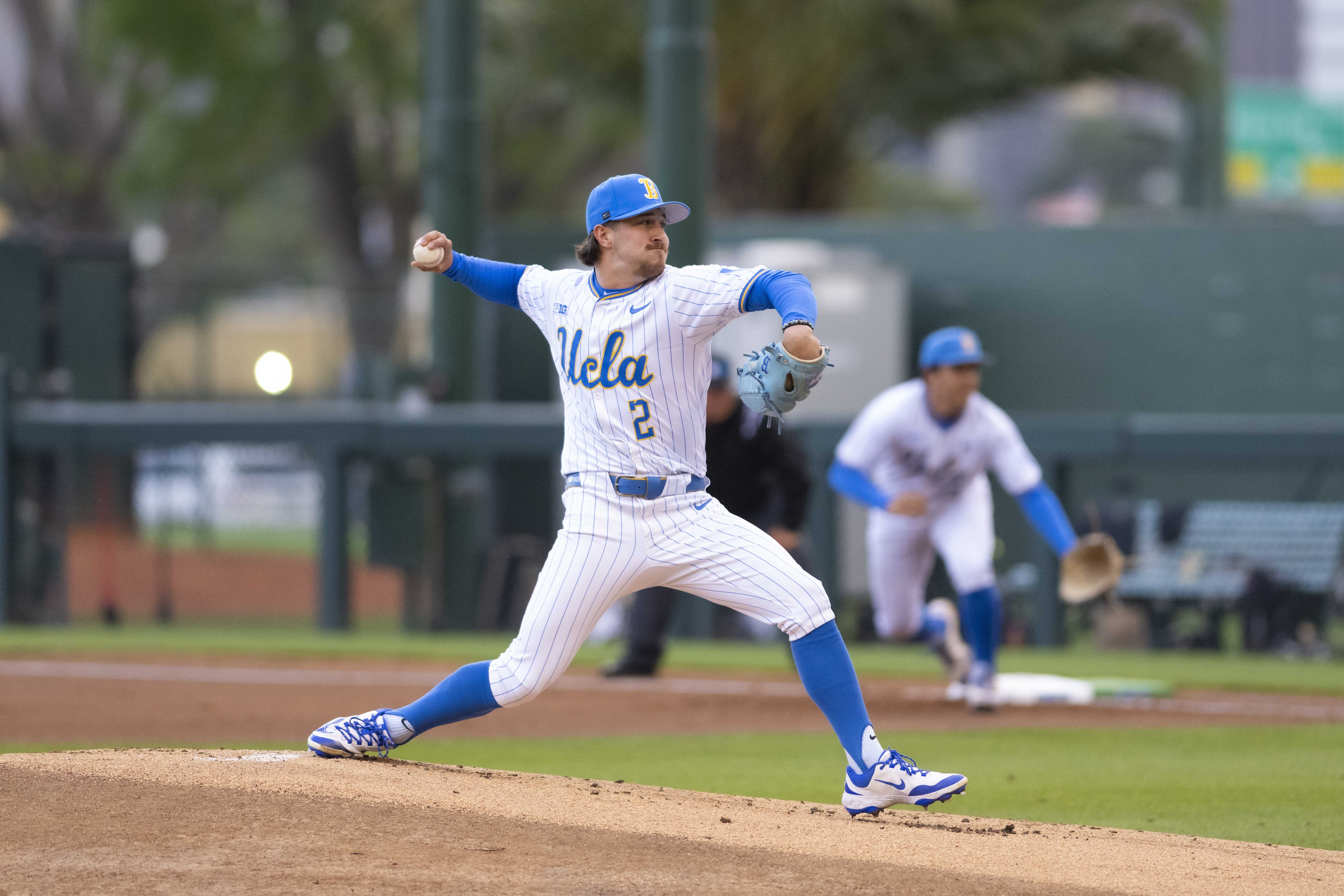
While it’s certainly still early, the Bruins’ weekend rotation has pitched just 38.1 innings, posting a 5.63 ERA and 1.93 WHIP, while recording just one quality start through nine weekend games.
Cody Delvecchio held Cal Poly to just two runs over five innings in his first collegiate start Feb. 14, but the junior right-hander has since lost his last two outings and has a 10.03 ERA and 1.63 WHIP on the season.
Formerly a back-end reliever before 2025, growing pains were expected in Delvecchio’s transition to the front-end of the rotation. But previous Bruin arms to make the transition – Luke Jewett, Alonzo Tredwell and Max Rajcic – never saw their ERAs balloon to double digits.
As the Friday night starter, Delvecchio is tasked with setting the tone of the weekend and matching the performance of the opposing team’s ace. While there’s time for the junior to put his early-season troubles in the rear-view mirror – with conference play practically here – it may not be long before Delvecchio is of more help to the Bruins by returning to his late-game role.
Saturday starter Ian May has the best ERA of the trio at 3.38 but also owns the worst FIP at 6.65. The redshirt junior southpaw has posted career-worst K/9, BB/9 and HR/9 over 13.1 innings pitched and opposing batters are hitting .308 against him.
Landon Stump’s 4.05 ERA and 4.25 FIP aren’t necessarily great but are an improvement from the sophomore right-hander’s freshman numbers of 6.80 and 5.12, respectively, and could suffice from a Sunday starter. But Stump showed flashes of what California’s 10th best right-hander from the 2023 class could be – throwing six innings of one-hit ball against the Mustangs on Feb. 16.
UCLA has been carried by offense in the early goings, but when its bats inevitably get caught in a slump, the team will need its weekend starters to step up – or find a trio who will.
The arm barn
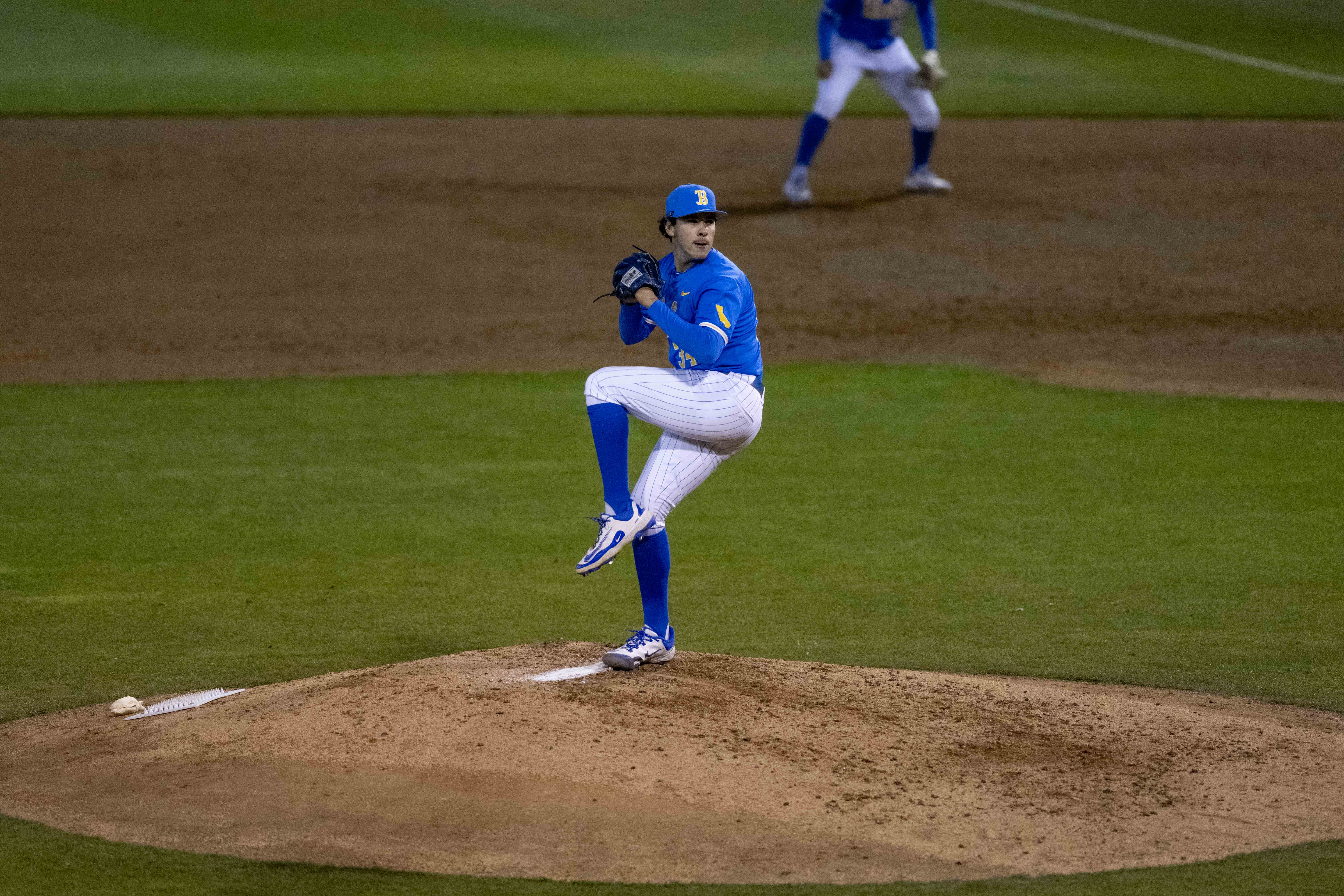
Twelve pitchers have appeared for UCLA in relief this season – collectively posting a 2.38 ERA and 1.15 WHIP across 75.2 innings pitched – and seven of them didn’t appear for the team last season.
Longtime Bruins who have recently recovered from injury – junior right-hander Jack O’Connor, redshirt junior right-hander Josh Alger and redshirt sophomore left-hander Chris Grothues – are making their first significant contributions to the team as the trio has combined for a 1.35 ERA across 13.1 innings.
Graduate student Ryan Rissas, who has made five appearances this season, has given Savage something he didn’t have at all last season – a left-hander out of the bullpen with prior collegiate pitching experience.
Right-handers sophomore Justin Lee and freshman CJ Bott are first and second on the team with seven and six appearances this season, respectively. Neither has allowed a run to cross.
But no pitcher has been as valuable for the Bruins as long reliever Luke Rodriguez. The sophomore right-hander didn’t give up a run this season until Tuesday – when he allowed a solo fly – and owns a team-best 0.63 ERA across a team-leading 14.1 innings pitched.
And to think, the Bruins roster eight more pitchers who have yet to appear this season.
After last season’s apparent lack of pitching depth, Savage has built a bullpen that’s shown it could be capable of supporting a team in the hunt for an NCAA tournament berth.




